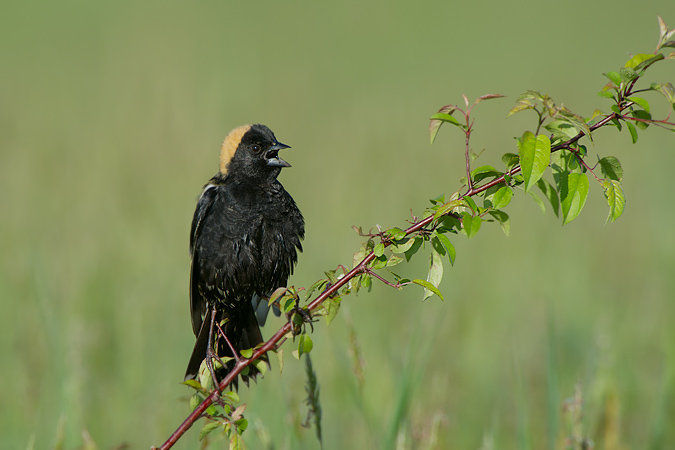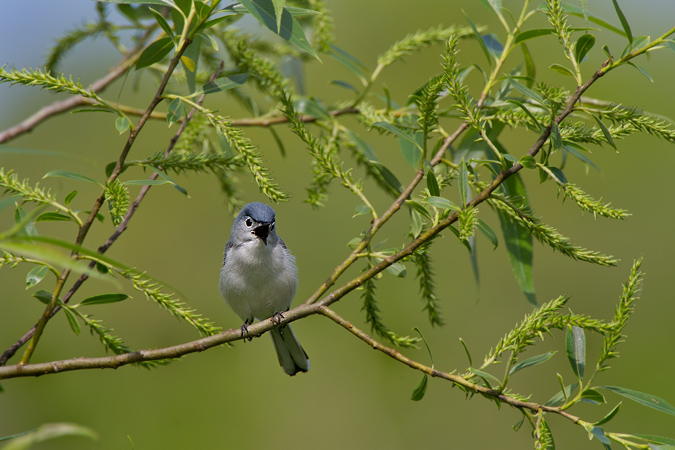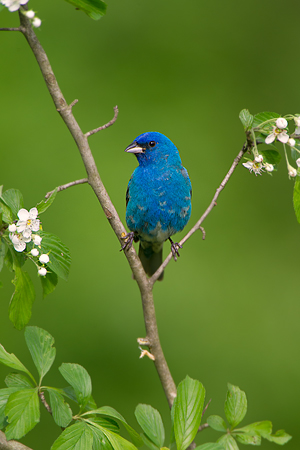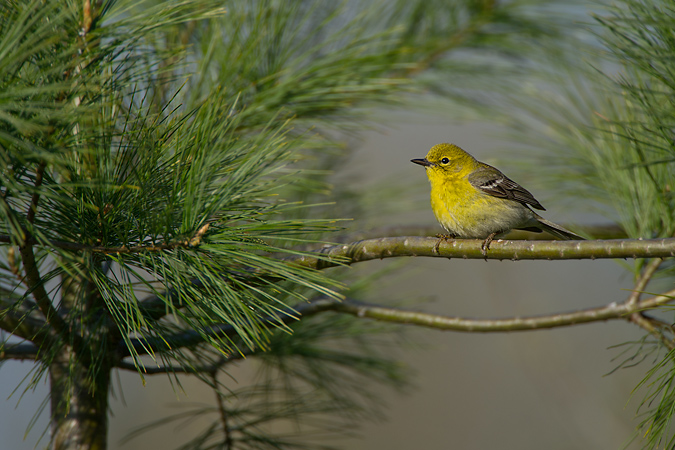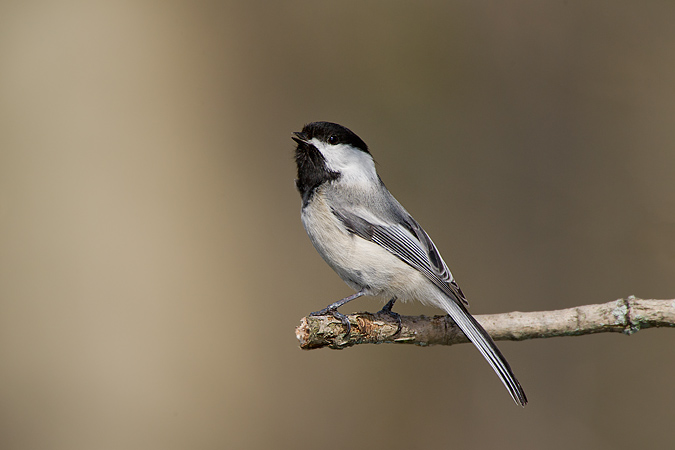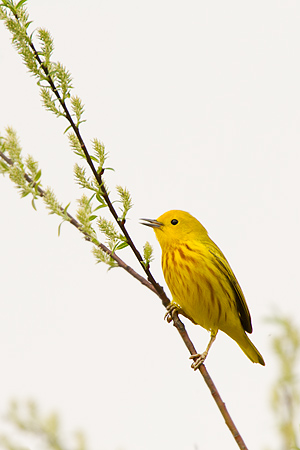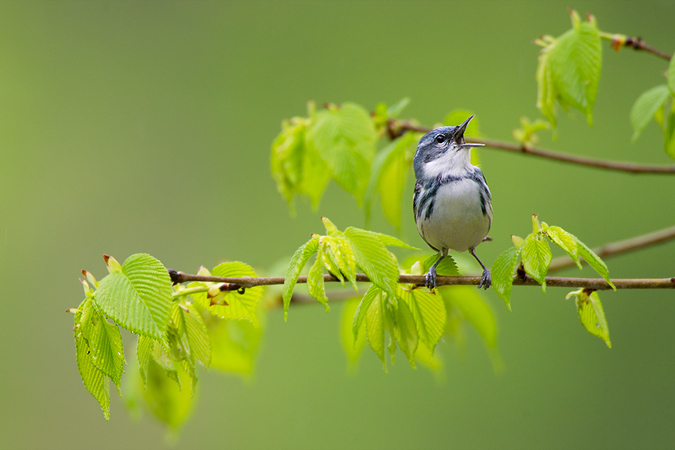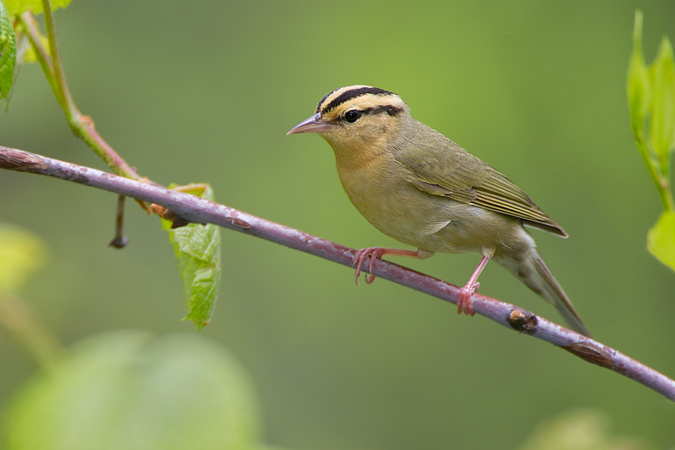This weekend I had the good fortune to spend time shooting with Matthew Studebaker – one of the best songbird photographers. You can see Matthew’s work here. Matthew is particularly great at getting beautiful songbirds, especially warblers, in beautiful settings. Today began wet, but with a vibrant sun as you can tell from this singing Bobolink.
The dew quickly evaporated, leaving us with a bright sunny day. The insects were everywhere and that brought out the birds to feed. One biological trait that is taught quickly is that animals tend to have a slower metabolism at larger size. So an elephant has one of the slowest metabolisms around. But this Blue-gray Gnatcatcher is on the other end of the spectrum – tiny but bouncing around everywhere. It was singing its tiny heart out to all who would listen.
The bird of the day had to be this gorgeous Indigo Bunting. I learned tons from Matthew, both about the birds as well as how to approach photographing songbirds. On top of all that, Matthew is a great guy and a pleasure to be around. He’s based out of the Cleveland area and does a lot of his photography in Ohio, Michigan, and Alaska.
As I woke up today in my tent, it felt great to have another try at the warblers. I knew they were out there as I had heard many yesterday, I just either couldn’t find them or get them out of tangled brush. Today wound up being significantly more successful, although I didn’t wind up with some of the target species. I only had a morning before I had to drive back, but it was a very pleasant morning. I spent the weekend in the Port Huron State Game Area which was a new location for me. It’s only a short drive north of Detroit, but the countryside comes quickly as you drive up the eastern side of the state. From my first try in southern Ohio, Pine Warblers have always been a species I can count on. They are incredibly inquisitive and live up to their namesake nesting in pine forests.
Although my focus is on the warblers, I keep attuned to any wildlife in the area. So while I was trying to photograph a Blue-winged Warbler, I noticed this eager Black-capped Chickadee. It’s a bird I have photographed numerous times, but you always get the best results by working with the more cooperative subjects. I was delighted when the chickadee perched atop this branch in a clearing at eye level. I left Port Huron excited from seeing that spring has finally come to Michigan.
The last two times I had been out, it seemed like I was getting better and better at finding and photographing the spring warblers. Well that didn’t continue today as I tried for some of the early warblers that come to southern Michigan. Too much of a good thing breeds complacency – at least that’s what I try and tell myself after days like today. A whole day’s worth of work and I was only able to put one bird onto ‘film’. It was great to see spring finally come to Michigan and there definitely were warblers around, just this Yellow Warbler was the only one who wanted to cooperate. On cloudy, overcast days like today, I usually try and avoid getting the sky in the background. I thought with the brightness of the Yellow Warbler a high-key image could work though.
I had another warbler day down here in southern Ohio. I felt like either I’m starting to become more attuned to the warblers or else I’m got pretty lucky. One of the keys with warblers is to use your ears. With large birds, you often find them just by looking in the right places. This is a recipe for disaster with warblers. They are small, move constantly, and are usually in dense foliage. Your best strategy is to listen carefully for the singing males. Boy were they singing today! This Cerulean Warbler was one of the proud singers. Sadly, Cerulean Warblers are declining the fastest of any neotropical migrant. Their numbers now are only 20% of what they were in the 1970s. A large part of this decline is thought to be due to high-yield coffee farming in their wintering habitat in South America. If you are interested in the conversation of this beautiful bird, I strongly urge you to look into the differences between shade-grown and high-yield coffee farming practices (shade-grown coffee farms provide great habitat for these birds).
Today was raining mostly all day. When it let up briefly, it was as cloudy as can be. In the forest understory, the trees do a great job of keeping things dry. Often the bird gets the cover and you are standing out in the open to capture the photo. But dreary rainy days make for fantastic photography. The light is soft and even, which is often a problem in the understory. The birds also tend to be more active and active for longer on such days. In addition to the Cerulean Warbler above, I had a great time with another Blue-winged Warbler and then ran into this Worm-eating Warbler. We don’t get Worm-eating Warblers in Michigan – southern Ohio is their northern limit. They are such great fun though – full of energy and zipping all over the place. Their buzzing call matches their frenetic pace. I still have a lot of work to do to get the compositions I would like with these difficult birds, but I can feel some of the pieces starting to fall into place. All in all, for just a day and a half, it was a fantastic time with the warblers.

